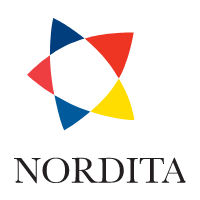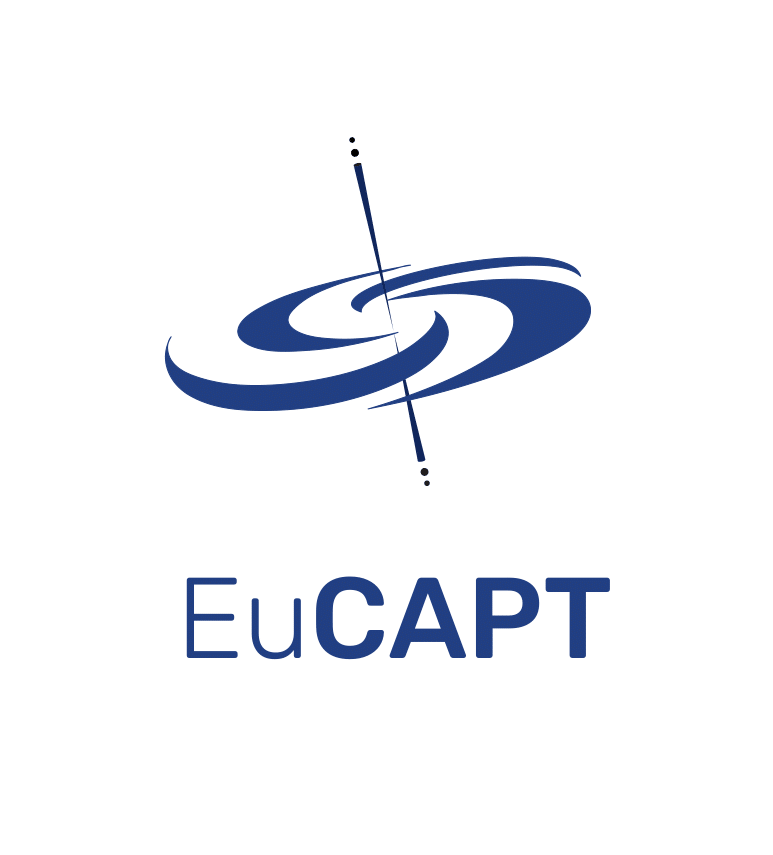Axions in Stockholm 2025
Albano 3: 4204 - SU Conference Room (56 seats)
Albano Building 3
The deadline for workshop registration and abstract submission has been extended to May 12, 2025. The review process for participation and abstracts will begin on March 18, 2025.
Priority will be given to applications submitted before this date.
The Conference registration will close on May 12, 2025.
We are excited to announce the three-week program "Axions in Stockholm, 2025," which will run from 23rd June to 11th July, 2025, at Stockholm University and the Nordic Institute for Theoretical Physics (Nordita). This program will bring together leading experts in axion physics — from fundamental theory and cosmology to astroparticle physics and experiments — to evaluate the field’s status, address critical questions, and explore promising new directions.
The program consists of two workshop weeks bookending a conference week. The workshops are limited to 50 scientists per week and will provide lots of room for discussions, collaborations and informal presentations, in addition to a few scheduled overview talks. The general conference week will bring together researchers from all subdisciplines of axion physics and include a large number of invited and contributed presentations, in addition to panel discussions on topics of particular interest.
This program is a designated "Nordita program" and "EuCAPT workshop", and is sponsored by the Swedish Science Council through the "AxionDM" research environment grant.
Schedule
• Week 1, workshop (23rd – 27th June): “Axions and gauge fields in the early and late universe”.
Focus on cosmological predictions of axion theories, and their observational prospects using existing or forthcoming data.
Invited overview speakers:
Katy Clough (Queen Mary, London)
Anne Davis (Cambridge)
Daniel Figueroa (Valencia)
Hyungjin Kim (DESY)
Azadeh Maleknejad (King’s College London)
Marco Peloso (Padua)
Kenichi Saikawa (Kanazawa)
Oleksandr Sobol (Münster)
Panel discussion on breakthroughs and challenges in numerical simulations of the early universe, featuring:
Axel Brandenburg (Nordita)
Angelo Caravano (Paris Institute of Astrophysics)
Katy Clough (Queen Mary, London)
Daniel Figueroa (Valencia)
John T. Giblin (Kenyon College)
• Week 2, conference (30th June – 4th July): “Axions in Stockholm, 2025”.
Bringing together researchers across disciplines to assess the status of the field, address critical questions, and identify the most promising future directions.
Invited Keynote speakers:
Graciela Gelmini (UCLA)
Reina Maruyama (Yale)
Liam McAllister (Cornell)
Alessandro Mirizzi (Bari)
Lorenzo Sorbo (MU Amherst)
Invited speakers:
Chelsea Bartram (Stanford)
Karl van Bibber (UC Berkeley)
Angelo Caravano (Paris Institute of Astrophysics)
Vitor Cardoso (Niels Bohr Institute)
Milena Crnogorcevic (Stockholm)
Gia Dvali (LMU Munich)
Jiji Fan (Brown)
Belen Gavela (Madrid, Autonoma U.)
Keisuke Harigaya (Chicago)
Eiichiro Komatsu (Max Planck Institute for Astrophysics, Garching)
Andrew Long (Rice)
David J.E. Marsh (King’s College London)
Kyohei Mukaida (KEK, Tsukuba)
Alexandros Papageorgiou (IFT, Madrid)
Yannis K. Semertzidis (IBS, Daejeon)
Fuminobu Takahashi (Tohoku)
Luca Visinelli (University of Salerno and INFN)
Julia Vogel (T.U. Dortmund)
Arne Wickenbrock (Johannes Gutenberg Universität Mainz)
Panel discussion on numerical simulations of axion dark matter, featuring:
Amelia Drew (ICTP Trieste)
Andrew Eberhardt (Tokyo U. IPMU)
Mark Hindmarsh (Helsinki)
Javier Redondo (Zaragoza)
Panel discussion on laboratory experiments for axion dark matter, featuring:
Axel Lindner (DESY)
Reina Maruyama (Yale)
Gray Rybka (Washington)
Chiara P. Salemi (UC Berkeley)
• Week 3, workshop (7th – 11th July): “Direct and indirect axion searches”.
Focus on utilising the current and next-generation experiments and observatories to search for axions in the lab and in the sky.
Invited overview speakers:
Ricardo Z. Ferreira (Coimbra)
Claudio Gatti (INFN)
Stefan Knirck (Harvard)
Jamie McDonald (Manchester)
Ben Safdi (UC Berkeley)
Younggeun Kim (Mainz)
Elisa Todarello (Nottingham)
Sungwoo Youn (IBS, Daejeon)
Registration
The registration and abstract submission are open now.
The deadline for workshop registration and abstract submission has been extended to May 12, 2025. The review process for participation and abstracts will begin on March 18, 2025.
Priority will be given to applications submitted before this date.
The Conference registration will close on May 12, 2025.
The fee for each workshop week is 1500 SEK, and the conference fee is 2500 SEK. The fees include coffee breaks, lunches, and a social dinner. Limited financial support is available, in particular to junior researchers. Register your interest for financial support upon application.
NB: Beware of scammers (e.g. Global Travel Experts, Royal Visit). You will receive details regarding the accommodation only from the organizers and the Nordita admin.
Childcare support
We are happy to offer child-care services during the event. Capacity is limited, please register interest in these services upon application.
Venue
Nordic Institute for Theoretical Physics and Stockholm University, Stockholm, Sweden.
Workshop week 1 and workshop week 3:
Conference Center, Albano Building 3, floor 4 (Nordita building).
Conference week:
Oskar Kleins auditorium (FR4 / AlbaNova Building)
Scientific Organizing Committee
Stefano Bonetti (INFN, Turin)
Francesca Calore (LAPTh, Annecy)
Jan Conrad (Stockholm University)
Jon Gudmundsson (Stockholm University)
Oksana Iarygina (Nordita)
Jun-Woo Jeoung (Stockholm University)
David Marsh (Stockholm University)
Alex Millar (Fermilab)
Evangelos Sfakianakis (Texas University)
Hiranya Peiris (University of Cambridge, Stockholm University)
Frank Wilczek (Stockholm U., MIT, Arizona State U., Shanghai Jiaotong U. and SRCQS, Shanghai)
Local Organizing Committee
Aleksandr Chatrchyan (Nordita)
Oindrila Ghosh (Stockholm University)
Oksana Iarygina (Nordita)
Junwoo Jeoung (Stockholm University)
Gagandeep Kaur (Stockholm University)
Jacob Lindahl (Stockholm University)
David Marsh (Stockholm University)
Charalampos Nikolis (Stockholm University)
Andrea Gallo Rosso (Stockholm University)
Contact
In case of any questions please contact us by email: axionsinstockholm@fysik.su.se
Code of conduct
The Organization is committed to make this meeting productive, safe, and enjoyable for everyone regardless of nationality, gender, race, sexual orientation, religion, political views, disability, and physical appearance. We will not tolerate harassment or misconduct in any form including, but not limited to, physical, verbal, and online actions. The following guidelines are expected to be followed by everyone at the meeting.
- Treat everyone with respect and consideration, this includes being respectful and mindful in your critique of ideas, and also to be mindful of your surroundings and your fellow participants. Do not insult or put down fellow attendees or staff.
- Communication is expected to be appropriate for a professional audience with diverse backgrounds. Harassment and sexist, racist, derogatory, or exclusionary jokes or comments will not be tolerated, neither are sexual language or imagery.
- Harassment includes (but it is not limited to) sustained disruption of talks or other events, inappropriate physical contact, sexual attention or innuendo, deliberate intimidation, stalking of any individual, and language bashing. It also includes offensive comments related to gender, sexual orientation, disability, physical appearance, race, religion or political views.
Any violation of these guidelines may result in the immediate removal of the offender from the meeting without warning and without refund. Furthermore, the offender’s action may be reported to the corresponding national institution. This will be at the sole discretion of the local organizing committee. Participants asked to stop any kind of inappropriate behaviour are expected to comply immediately. Anyone wishing to report any violation of these guidelines, is encouraged to speak to the organizers. The organization will grant confidentiality to both parties involved and will do everything in their power to restore a professional and safe environment for all as fast as possible.



